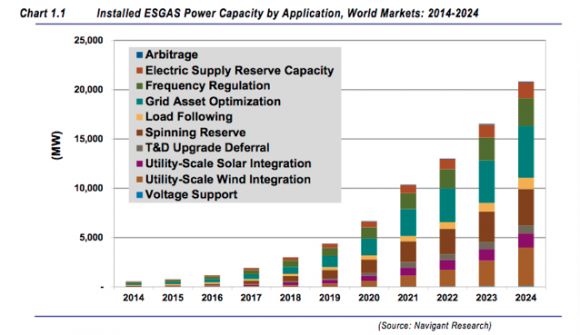As listeners of The Energy Gang podcast or regular GTM commenters know, Jigar Shah is a rare and uncontroversial voice at GTM.
So we were as shocked as anyone when Shah took the stage at the Energy Storage Association's conference and started offering up some blunt advice for storage developers.
As a "business model innovation" evangelist in the PV industry, Shah was invited to share some lessons that solar can teach storage. He followed up SunPower CEO Tom Werner's talk from last year, in which Werner described batteries as "a big deal for our industry."
However, Shah was far less interested in talking about the value of storage paired with PV.
"If the storage industry is dependent on backing up solar, it’s hopeless. You should quit your job today."
His point: behind-the-meter batteries and utility-scale storage offer far more value than simply backing up solar systems. And it's up to developers to communicate that value clearly, particularly to those financing projects.
"[Solar] is not your lowest-hanging fruit. Some of the other applications are way, way higher value," said Shah.
"When you say you’re in the residential solar financing business, I understand what that means. When you say you're in commercial solar power-purchase agreements, I know what you mean. When you say you're in the storage business, what the hell does that mean?"
Services such as demand-charge reduction, frequency regulation, transmission and distribution upgrade deferral, and voltage support are much more tangible and competitive, he argued. Those are the kinds of projects his new company, Generate Capital, is looking to finance.

Solar Grid Storage, a company founded by a group of solar pioneers to pair large-scale batteries with commercial PV systems on a single inverter, offers an example of the kind of confused business model Shah was skewering.
After a completing a handful of projects, the company found that using an inverter for frequency regulation services can conflict with the PV system. Frequency regulation needs are higher in the middle of the day, but Solar Grid Storage was not able to bid at full capacity in the PJM market because the solar needed the inverter during times of high production.
Shah invested in one of the first projects, which he said was financed with high-cost money.
SunEdison recently acquired the company to beef up its storage strategy. Tom Leyden, Solar Grid Storage's CEO, suggested in an interview that SunEdison would be looking to co-locate storage with solar or wind projects, rather than pair them on a single inverter.
"I think what you're finding for investors is that the solar-plus-storage finance opportunity is a lot less attractive than solar and storage co-located at the same place," said Shah on a recent Energy Gang podcast.
Wrapping up his speech at the Energy Storage Association conference, Shah reiterated that he's more interested in deals that more clearly define how a battery or other storage device will be providing its own set of services.
"When I marry solar with storage, does the solar carry the storage project? Or does the storage sink the solar project? You don’t want to sink it," he said.



